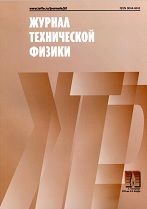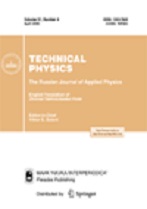|
This article is cited in 1 scientific paper (total in 1 paper)
To the 125th anniversary of Academician N.N. Semenov
The chain mechanism of the effect of dichlorodifluoromethane additives on the combustion of hydrogen and methane in oxygen and air
N. M. Rubtsova, B. S. Seplyarskya, A. P. Kalininb, K. J. Troshinc
a Institute of Structural Macrokinetics and Materials Science, Russian Academy of Sciences
b Ishlinsky Institute for Problems in Mechanics of the Russian Academy of Sciences, Moscow
c N. N. Semenov Institute of Chemical Physics, Russian Academy of Sciences, Moscow
Abstract:
The effect of difluorodichloromethane additives on spark initiated combustion of hydrogen and methane in air and oxygen at atmospheric and reduced pressures was investigated. It has been found that the ignition concentration limit of the premixed hydrogen-air mixture in the presence of difluorodichloromethane at 1 atm exceeds 10%, while it has been shown for the first time that the ignition limit of the premixed methane-air mixture is 1% of difluorodichloromethane, which is thereby the most effective methane combustion inhibitor. This also means that the active combustion centers of hydrogen and methane, which determine the development of combustion, have a different chemical nature. Thus, the reaction including a difluorodichloromethane molecule resulting in the formation of HF ($\nu$ = 2.3) during methane combustion should include a step involving the active methane combustion intermediate. Using hyperspectrometers of the visible and near-infrared ranges in the products of the oxidation reactions of hydrogen and methane in the presence of difluorodichloromethane, vibrationally excited HF molecules ($\nu$ = 2.3) were first discovered. For the first time, it was found that HF molecules ($\nu$ = 3) during methane combustion are formed at the moment when the maximum rate of chemical conversion is achieved, that is, reactions involving inhibitor molecules compete with the process of development of reaction chains. Keywords: chain burning, inhibition, methane, hydrogen, dichlorodifluoromethane, hyperspectrometer, high-speed color filming, radicals, excited particles.
Keywords:
chain combustion, inhibition, methane, hydrogen, dichlorodifluoromethane, hyperspectrometer, high-speed color filming, radicals, excited particles.
Received: 13.09.2020
Revised: 15.12.2020
Accepted: 16.12.2020
Citation:
N. M. Rubtsov, B. S. Seplyarsky, A. P. Kalinin, K. J. Troshin, “The chain mechanism of the effect of dichlorodifluoromethane additives on the combustion of hydrogen and methane in oxygen and air”, Zhurnal Tekhnicheskoi Fiziki, 91:6 (2021), 895–903; Tech. Phys., 66:8 (2021), 929–937
Linking options:
https://www.mathnet.ru/eng/jtf4983 https://www.mathnet.ru/eng/jtf/v91/i6/p895
|


| Statistics & downloads: |
| Abstract page: | 61 | | Full-text PDF : | 35 |
|





 Contact us:
Contact us: Terms of Use
Terms of Use
 Registration to the website
Registration to the website Logotypes
Logotypes








 Citation in format
Citation in format 
